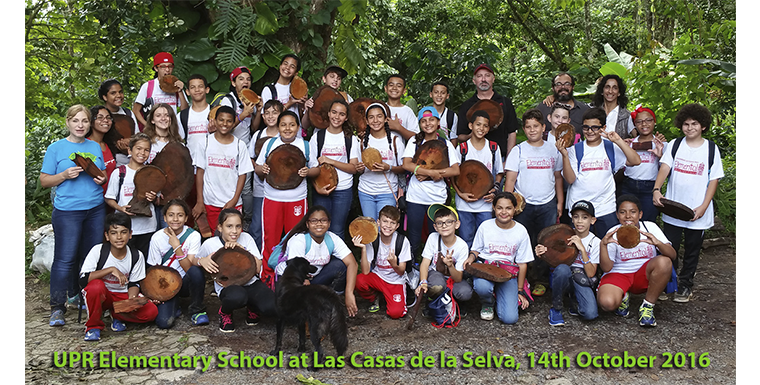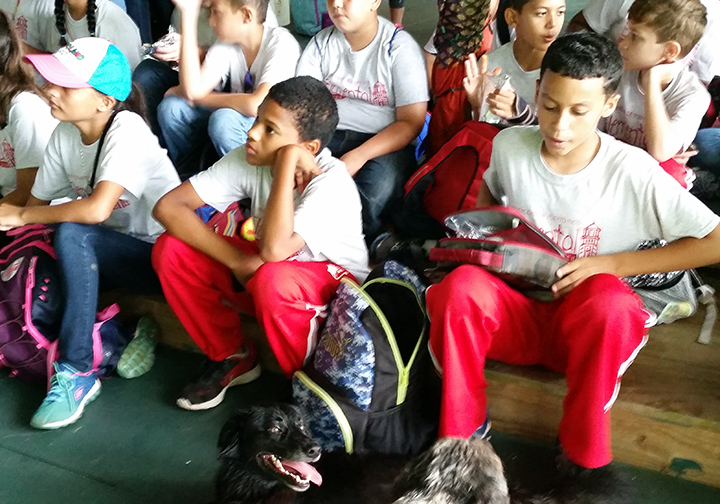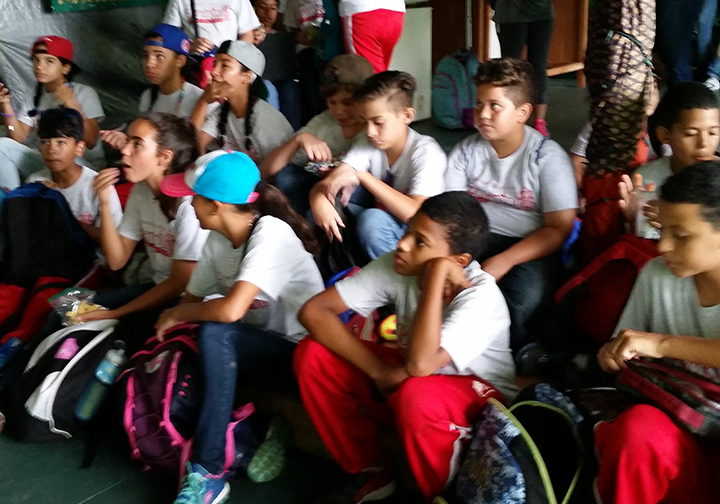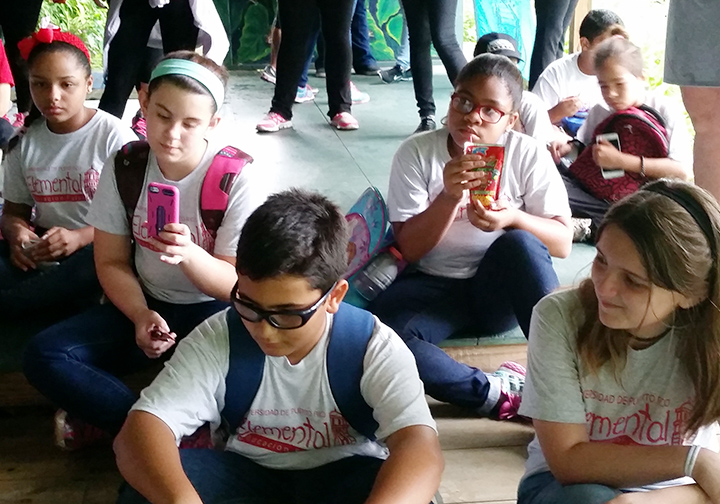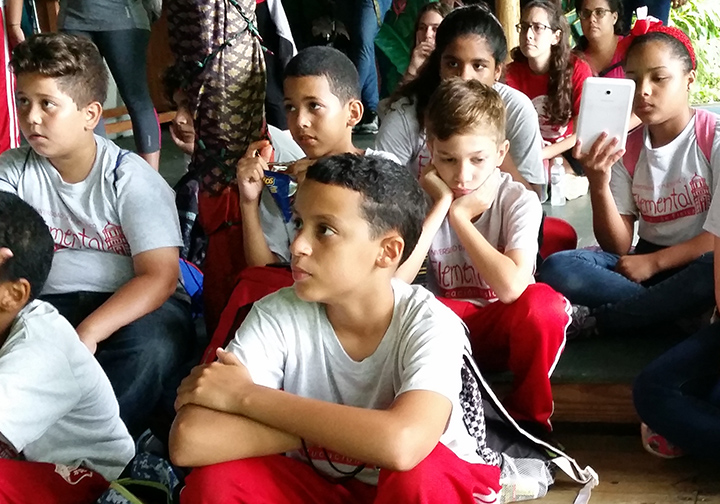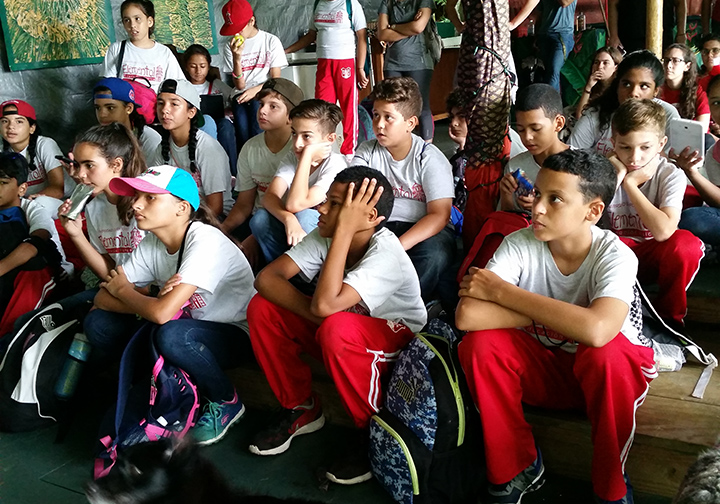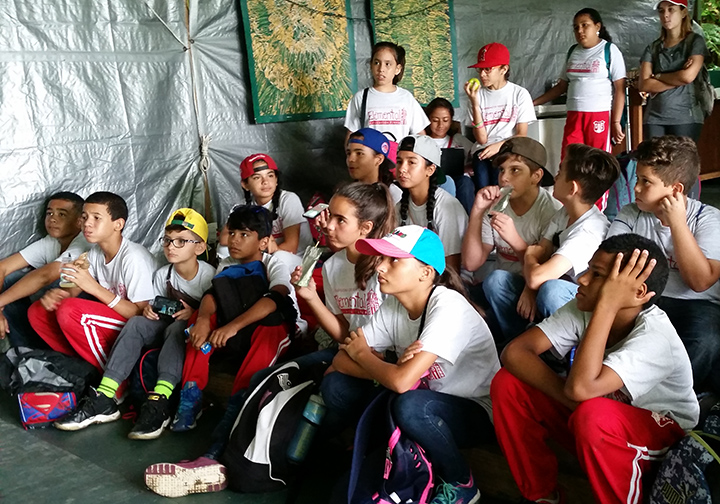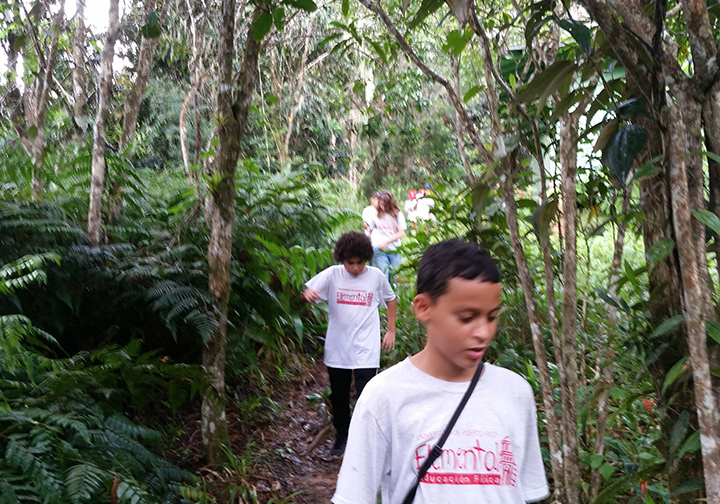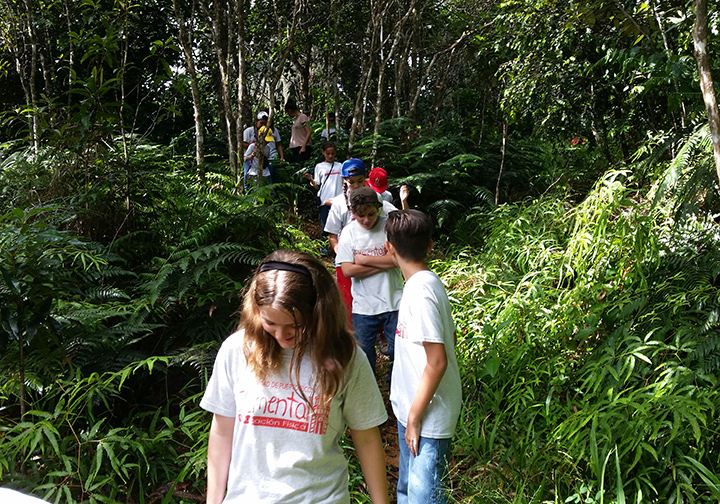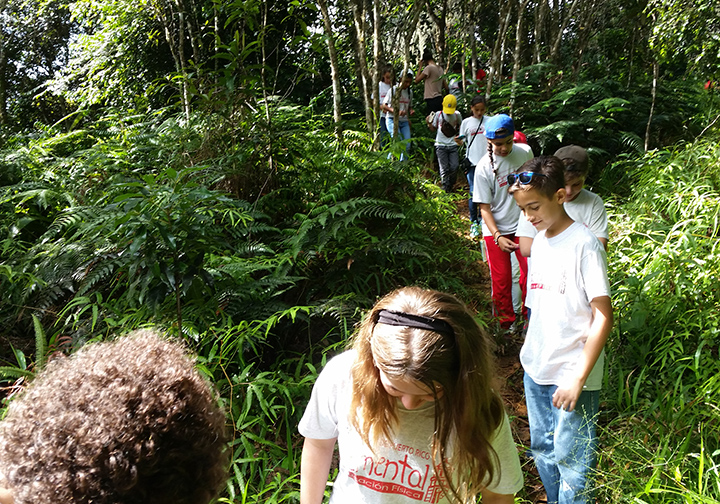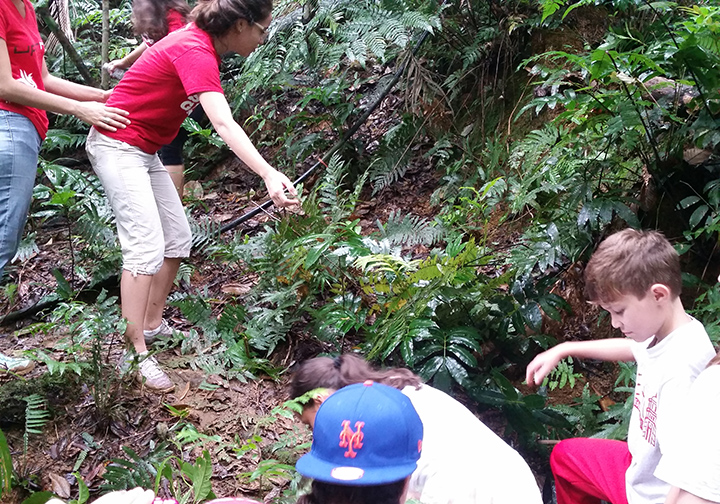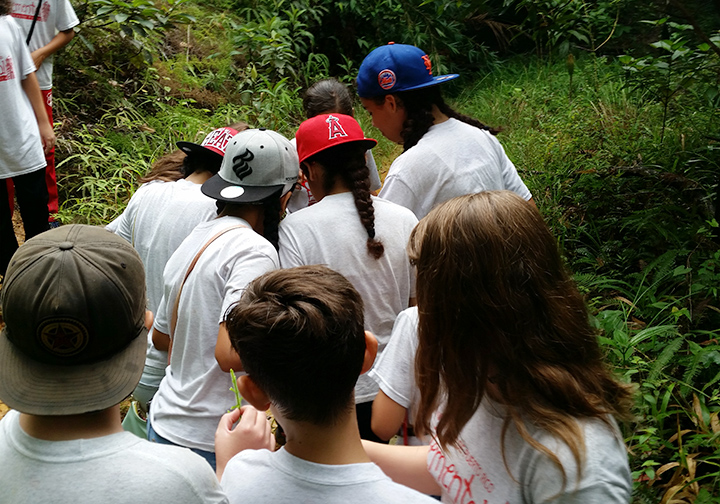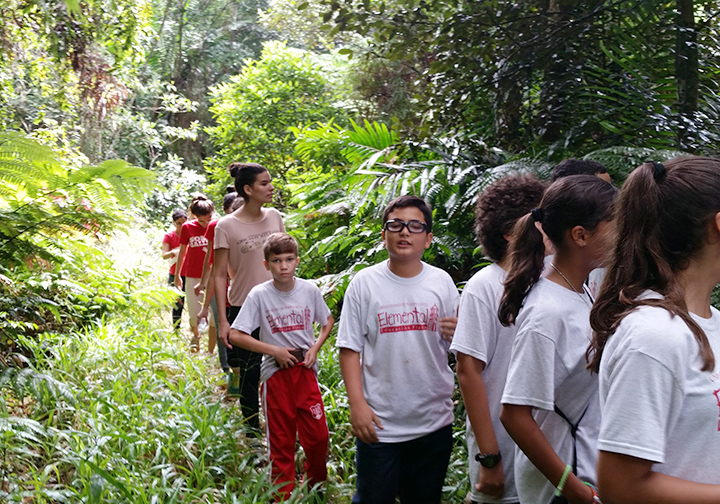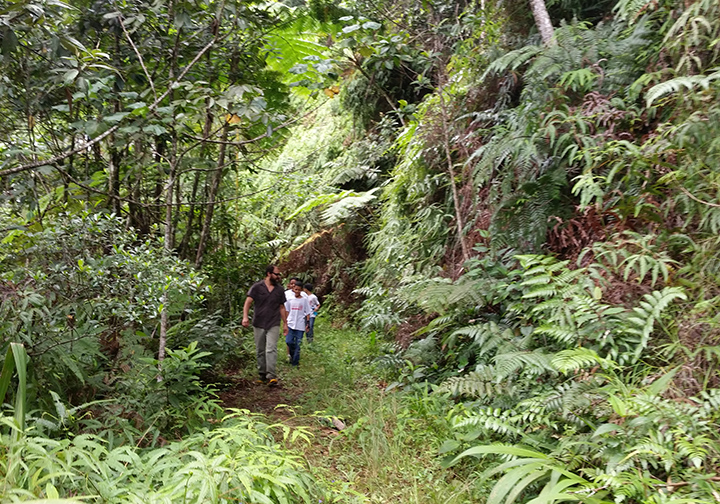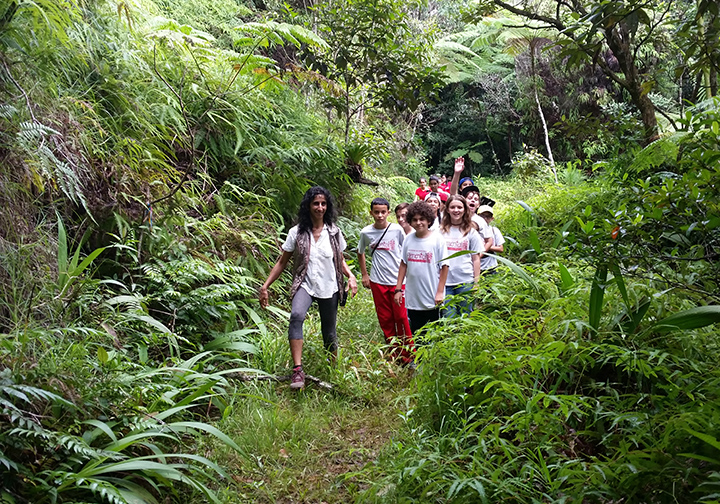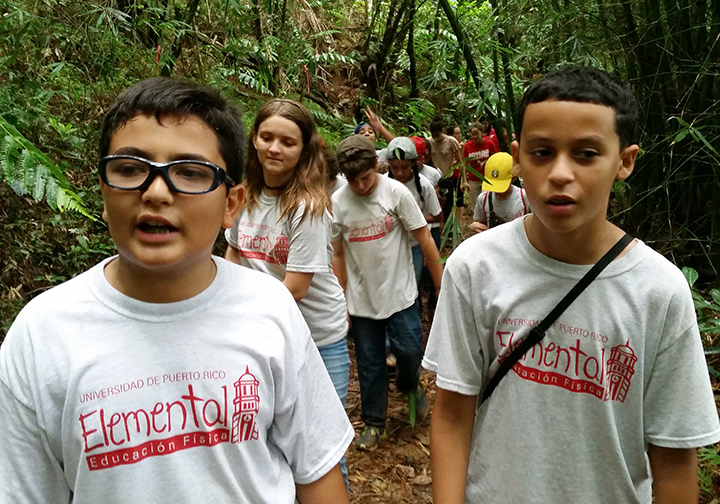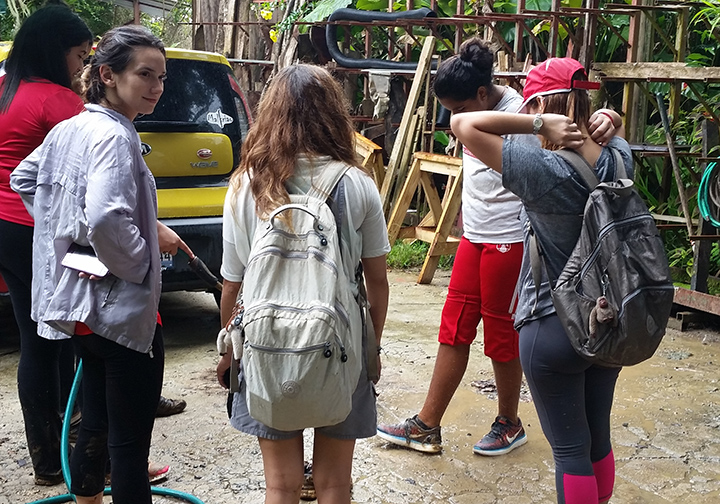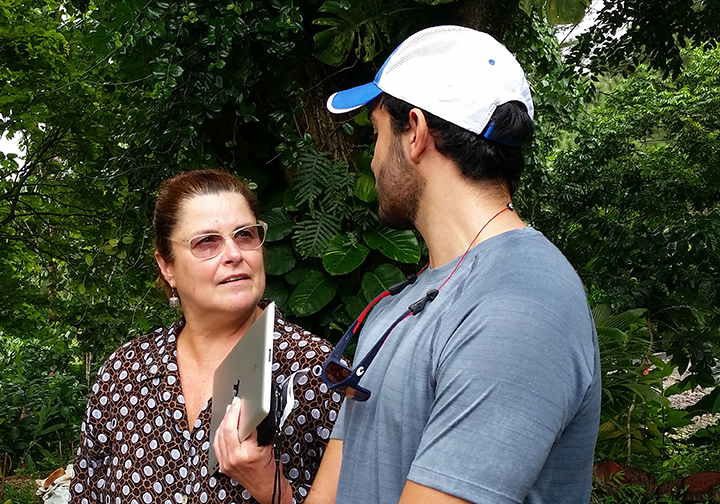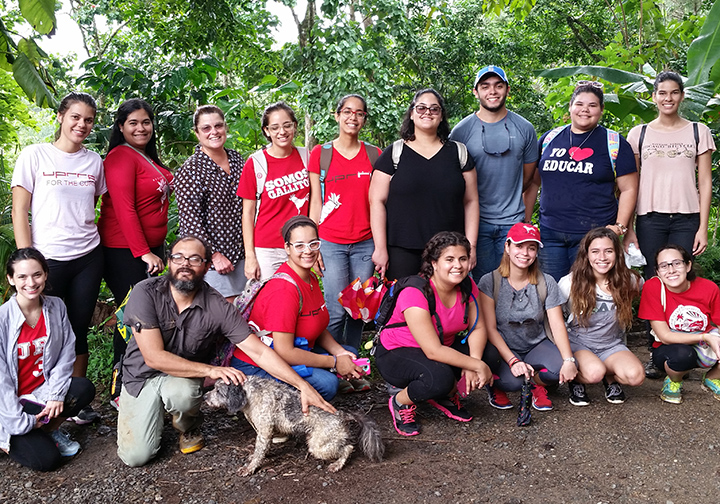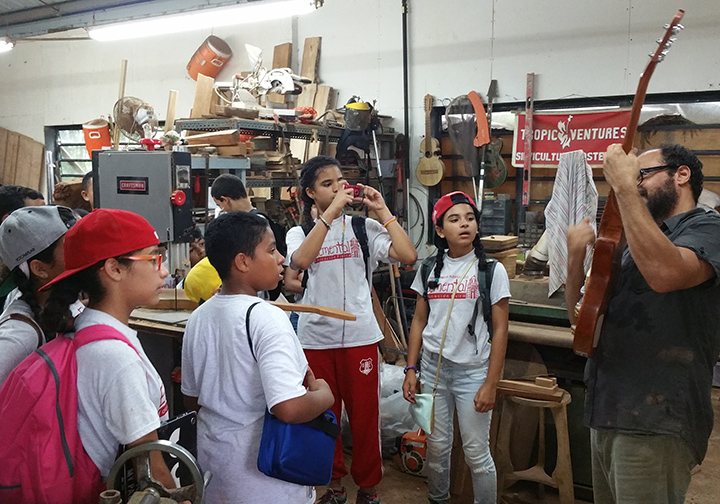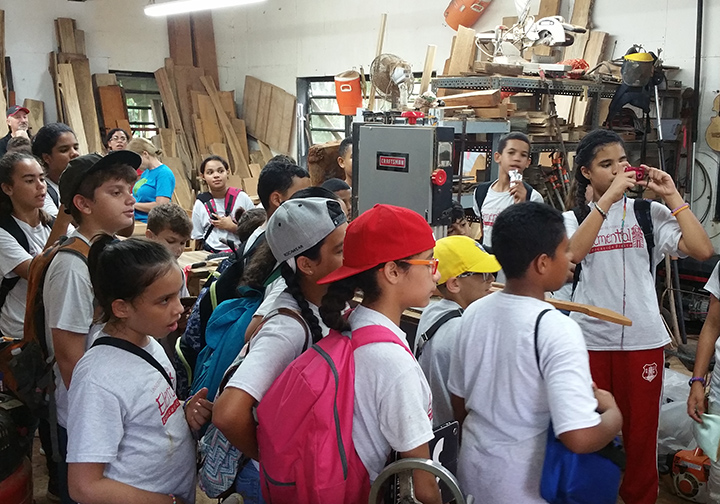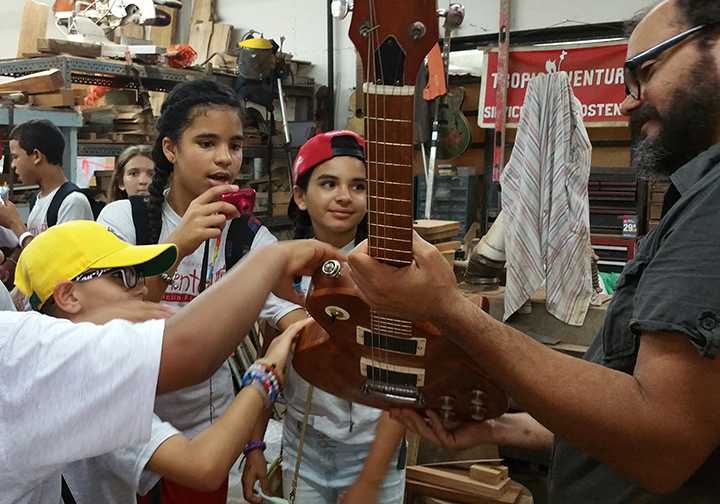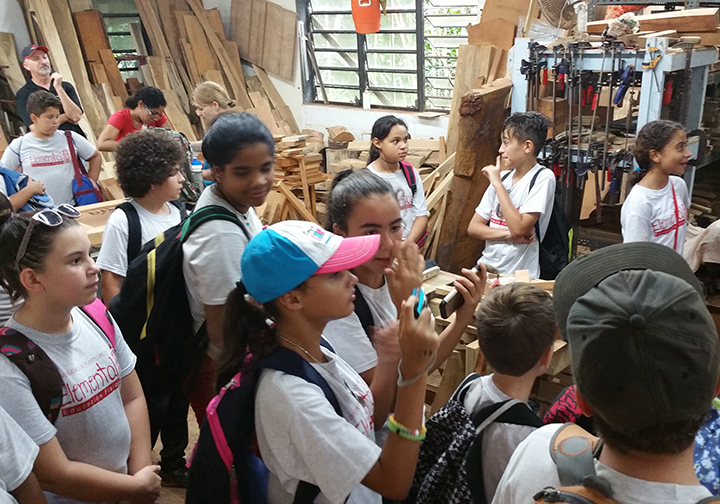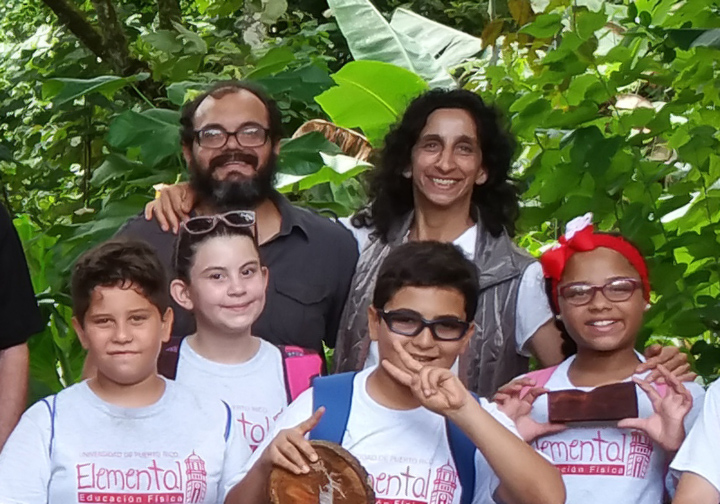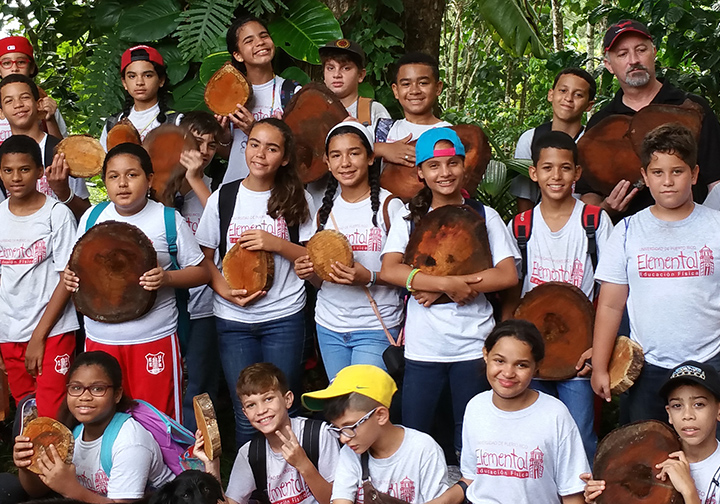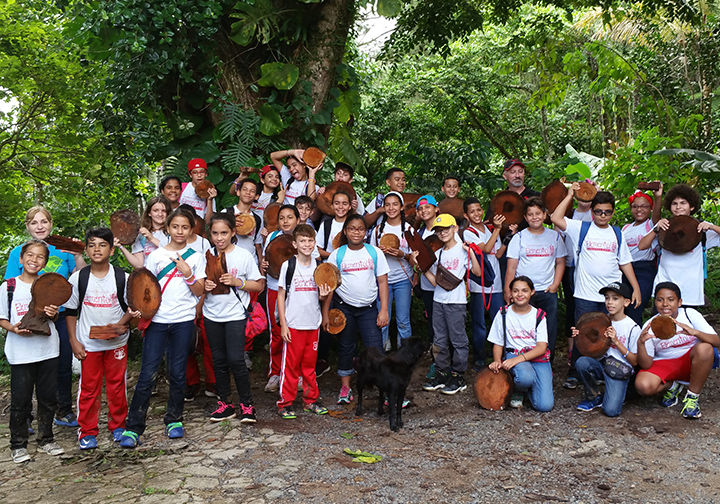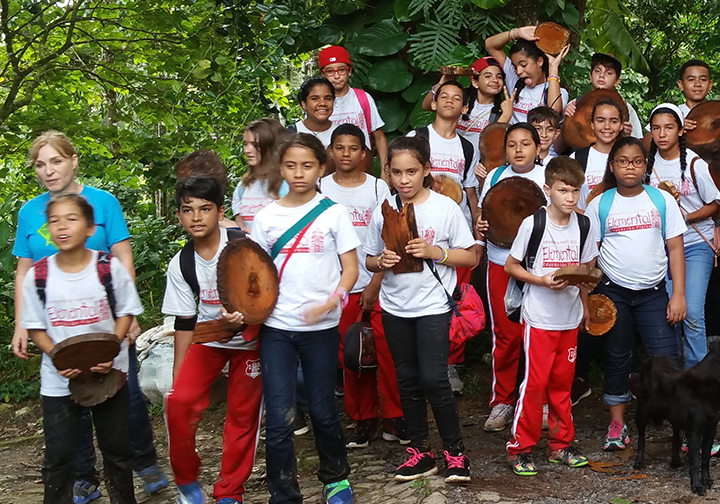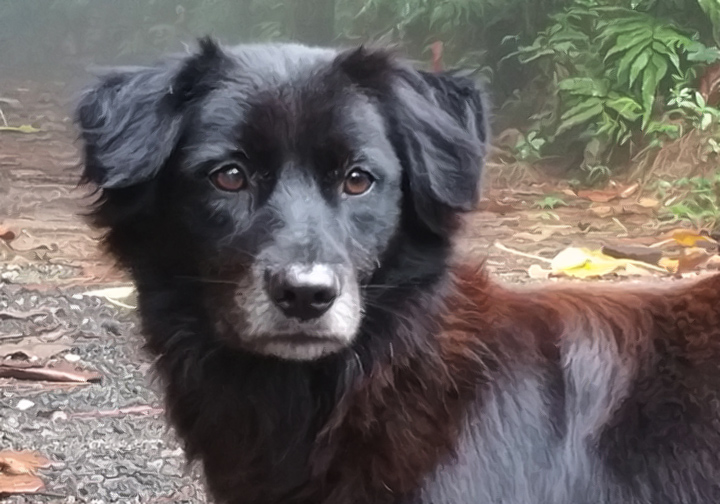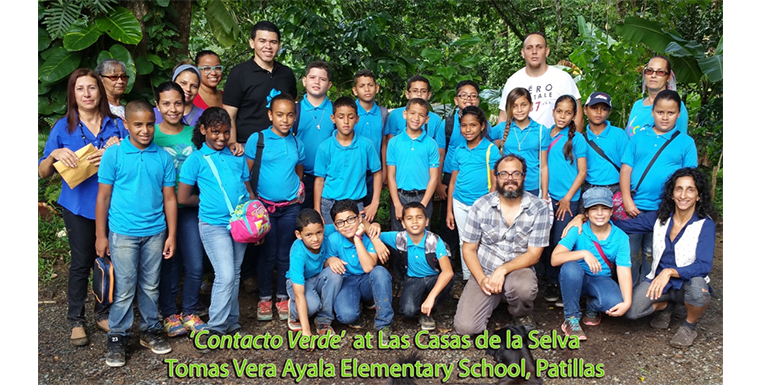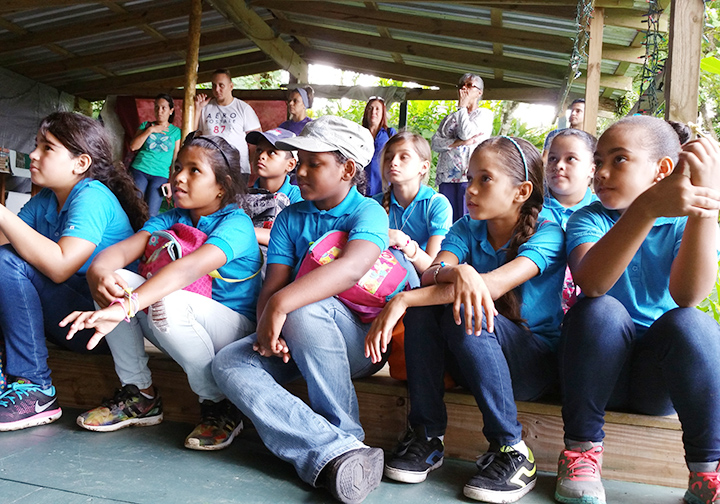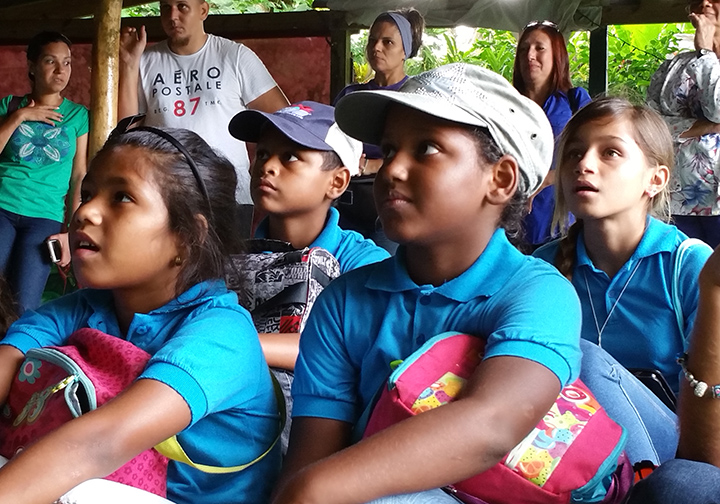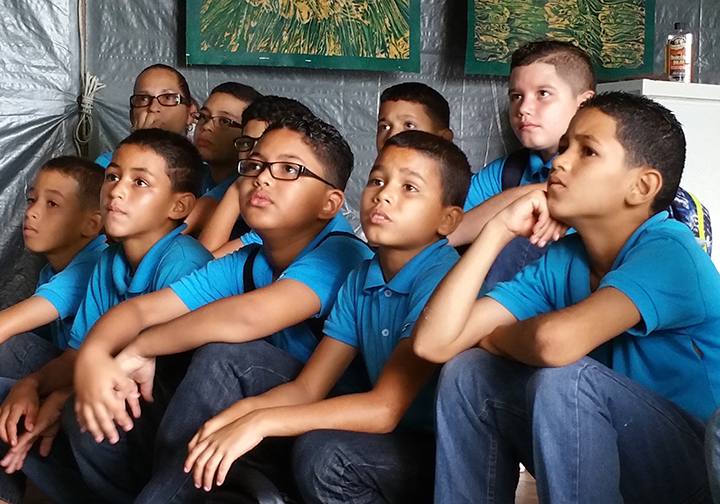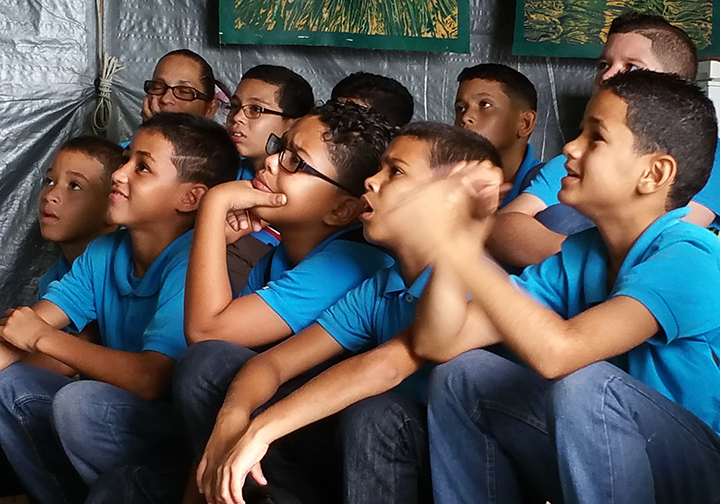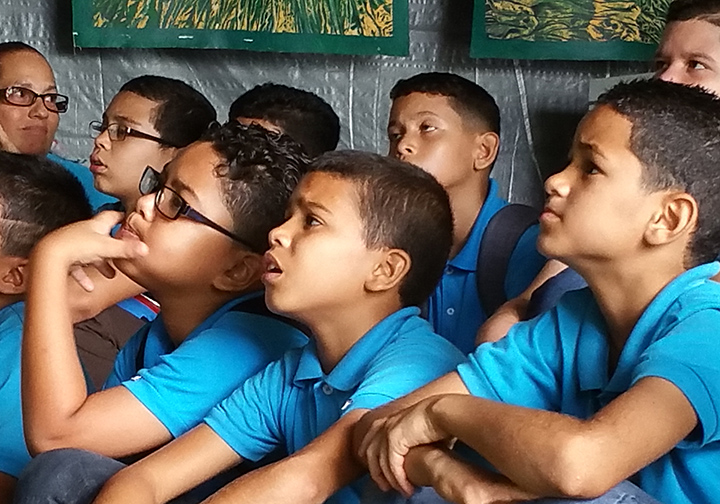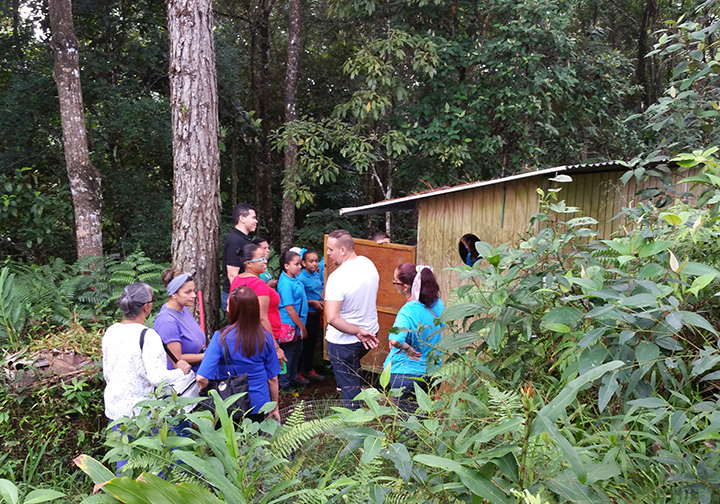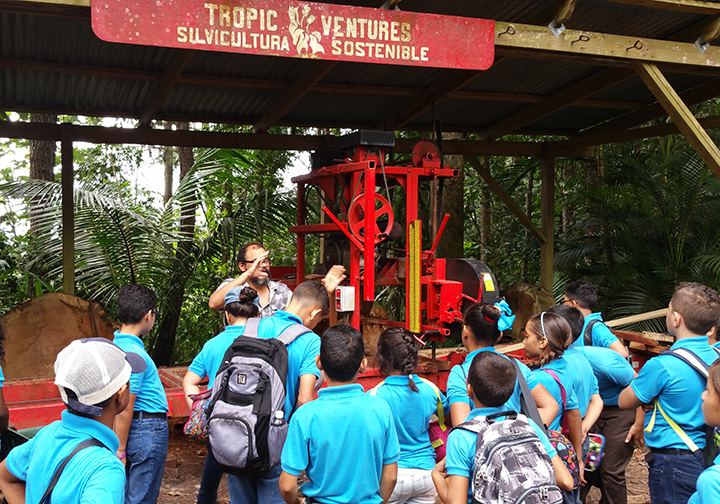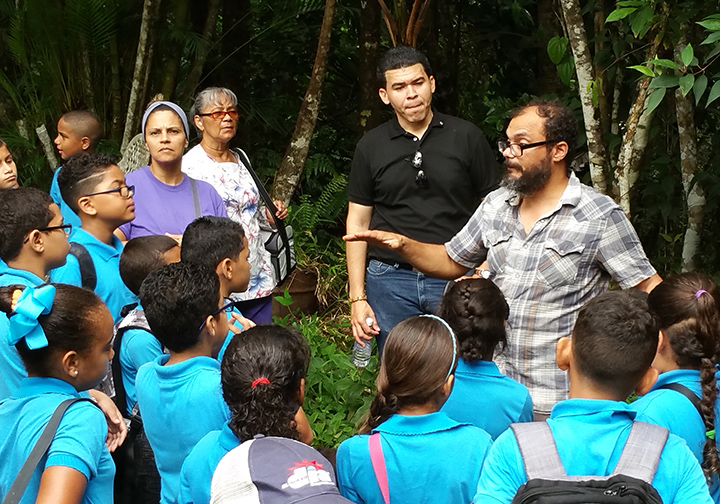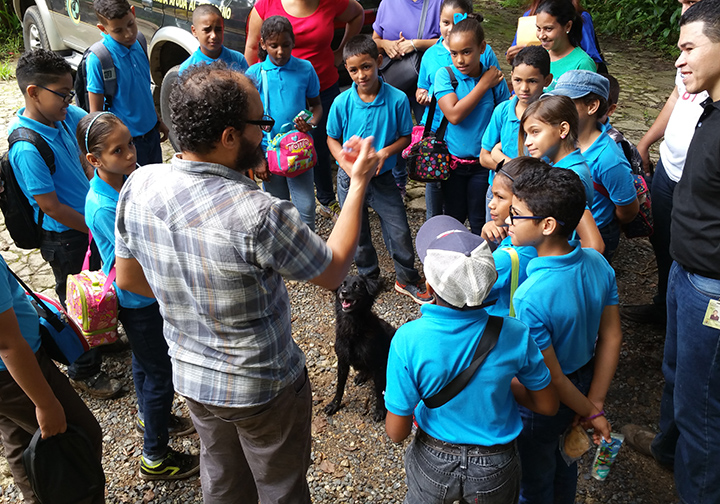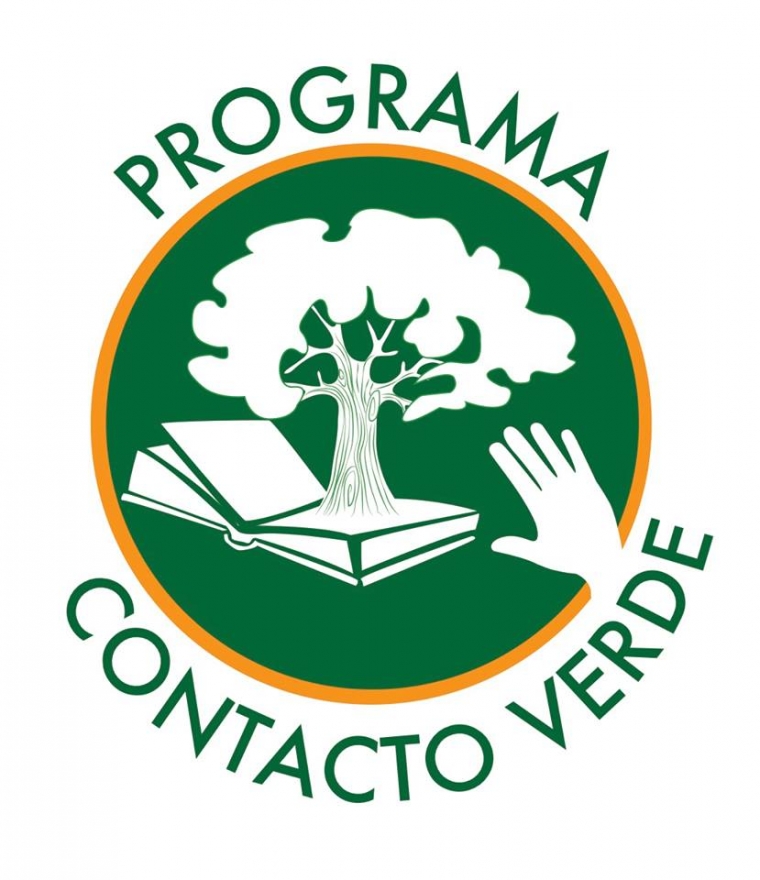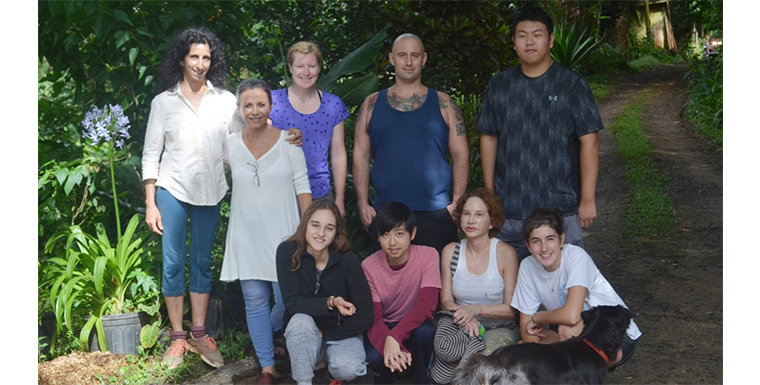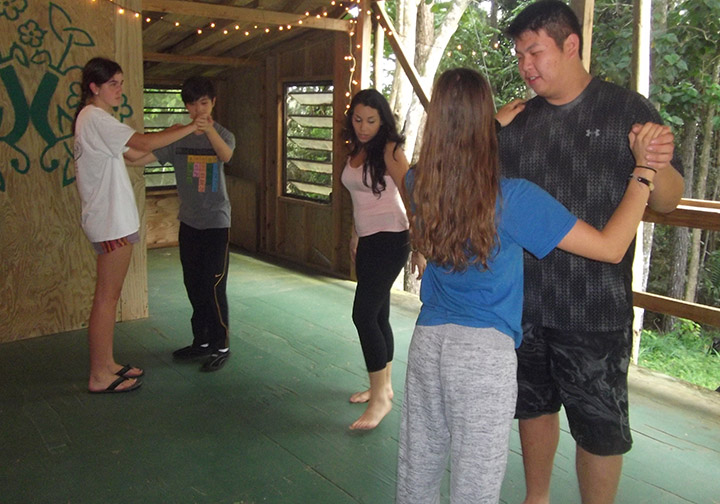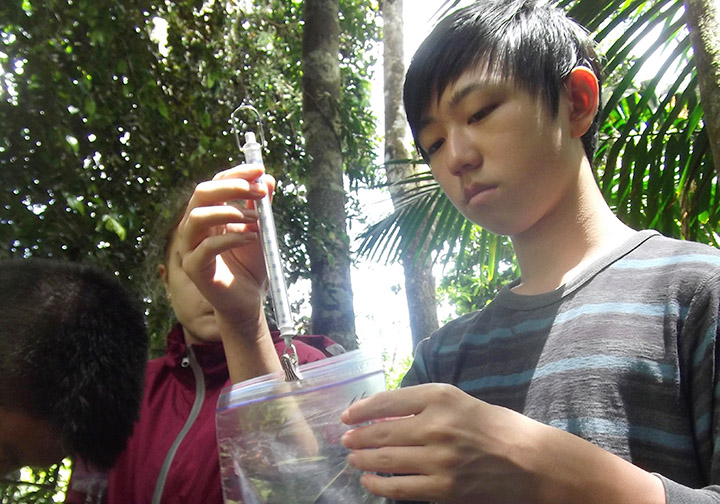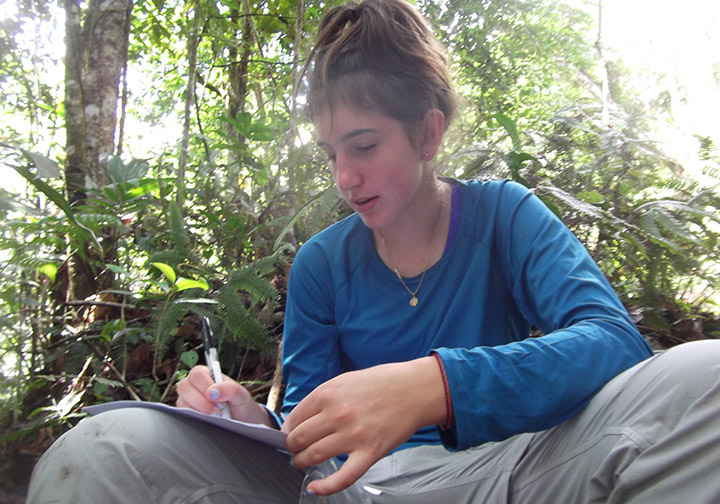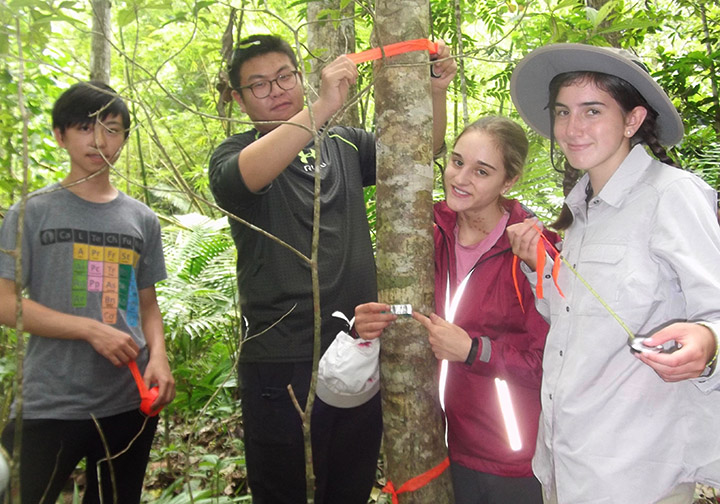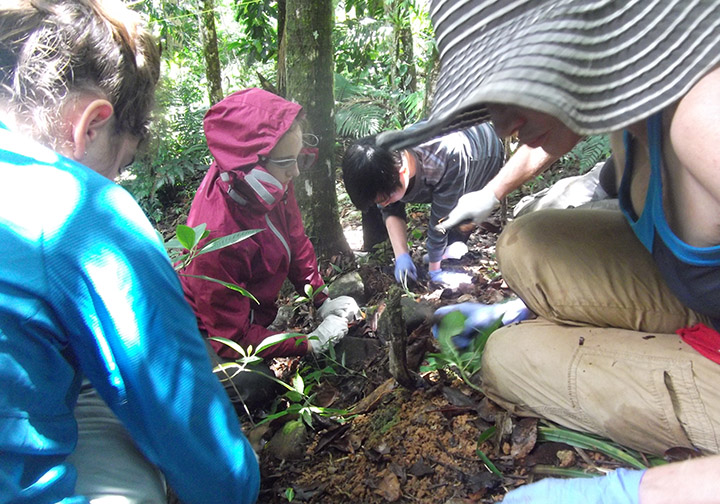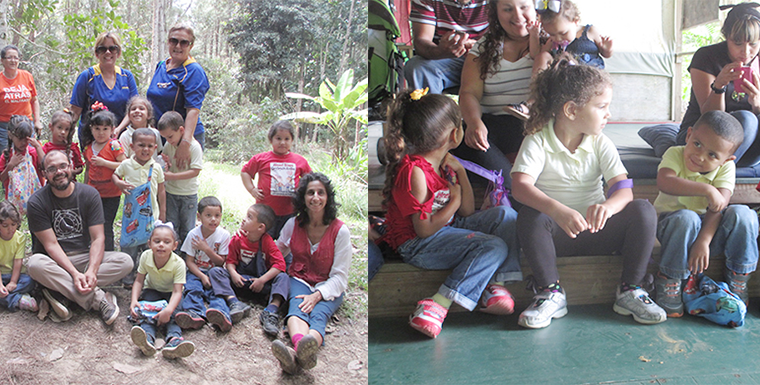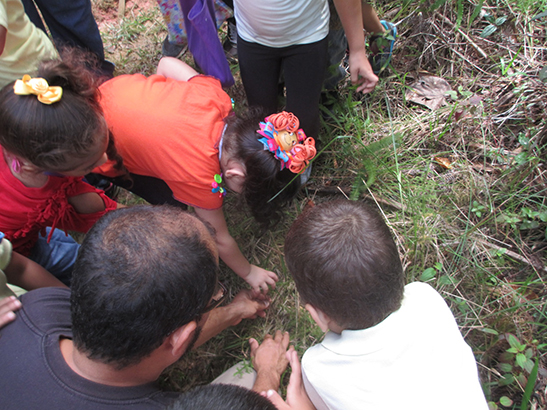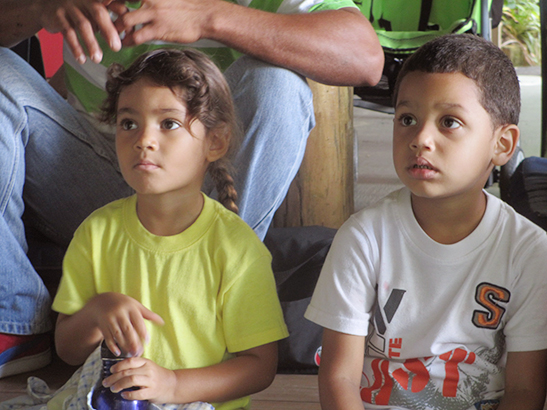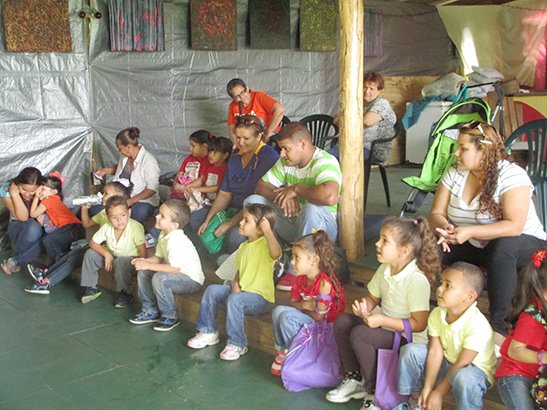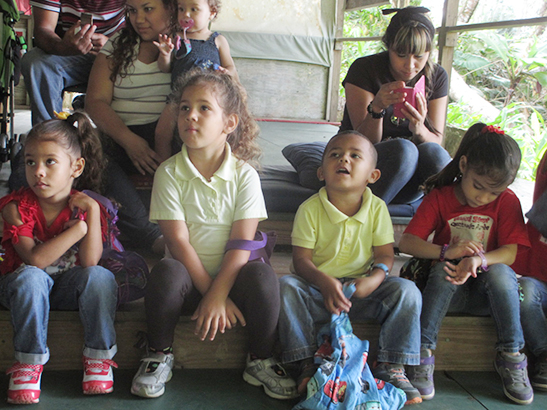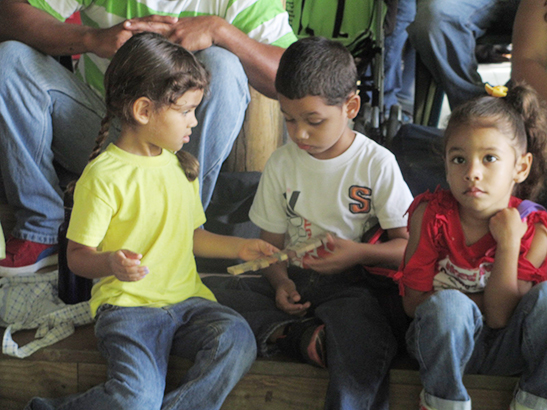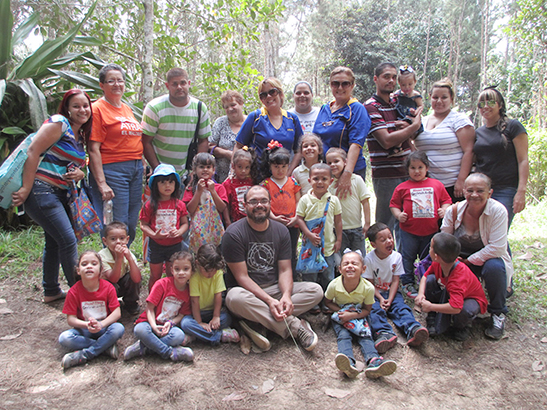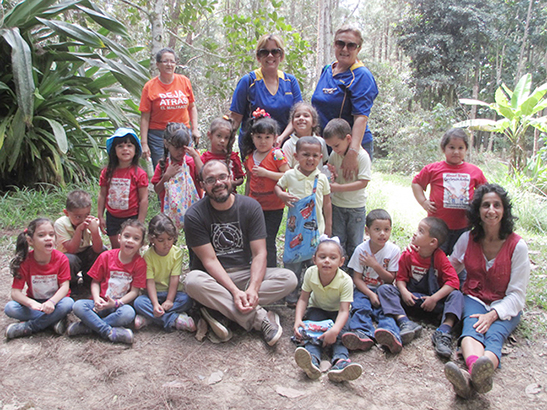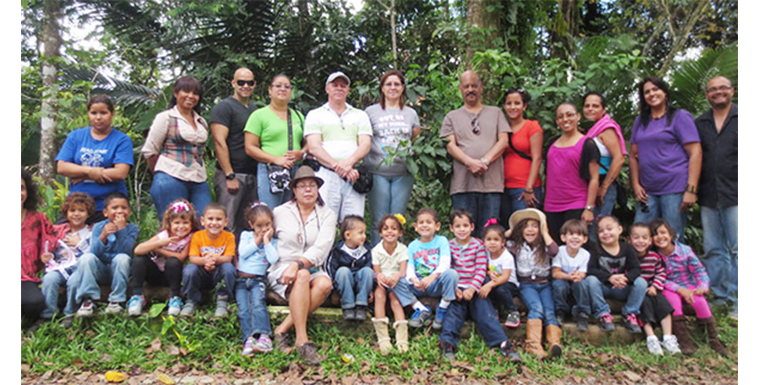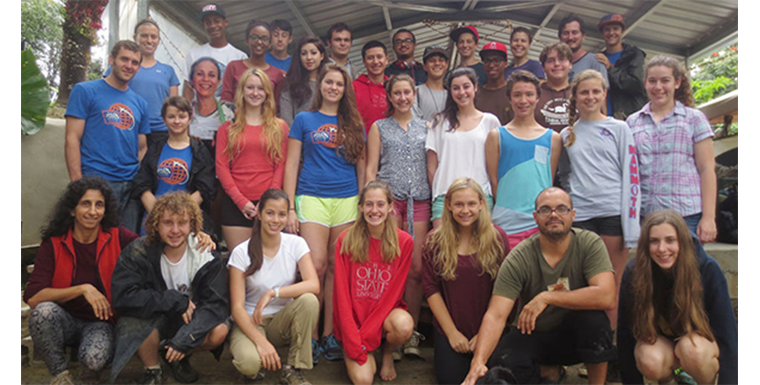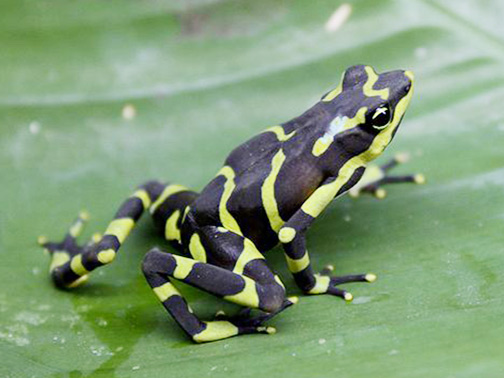This field trip was organized by Professors Lizzette M. Velazquez, and Linda Clark, as part of their “Al rescate del paisaje forestal de la UPR” (Rescuing the forest landscape of UPR), and included future elementary school teachers in training. We went through the forest trails of Las Casas de la Selva to see the origin of the Sonadora River, and whilst getting there, we talked about trees, animals, soil, the importance of forests, and marveled at the biodiversity all around us.
Back at the homestead, we looked at compost piles at different stages of composting, learnt about humanure composting toilets, (and used them), and smelt fresh humanure compost from a seasoned pile in 3t’s hand! We talked about attitudes towards dirt, or is it soil? and the art of making soil, to grow food. Later, a talk in the wood-shop, a look at raw lumber, and our hand-made wood products, all the while, Negralora, the famous black dog, loving the attention.
Thank you to Lizzette and Linda, and the teachers in training, who helped to manage the group.
Thanks also to Professor Fernando Silva Caraballo, el Director del Instituto de Ciencias para la Conservación de Puerto Rico (INCICO), for early discussions in organizing this field trip, as part of a continuing education in forest appreciation and active management.
Universidad de Puerto Rico, Recinto de Río Piedras Facultad de Educación (DPE y EEUPR) en colaboración con la Oficina de Rectoría e InCiCo
Proyecto:
¡Al rescate del paisaje forestal del cuadrángulo del Recinto de Río Piedras de la Universidad de PR!
Conceptuado y desarrollado por: Dra. Lizzette M. Velázquez Rivera, Dra. Linda Clark Mora, el Dr. Eric I. Figueroa Gonzalez bajo el asesoramiento del Dr. Fernando Silva Caraballo; agosto a diciembre de 2016
Problema y participantes:
Entre los recursos naturales del Recinto de Río Piedras de la UPR se destaca la diversidad de flora que posee. Esta flora sirve de escenario en el cual ocurren innumerables interacciones que enriquecen la vida en este ecosistema urbano. Sin embargo, ante el paso del tiempo y el aumento de la demanda de uso de los terrenos del Recinto para diversos propósitos propios del urbanismo, su presencia también acarrea retos. Entre ellos se destacan la existencia de árboles viejos y enfermos que pueden presentar peligro y el impacto negativo de éstos árboles en las edificaciones.
No es cuestionado el valor estético, ecológico, histórico y científico; entre otros, que proporciona este paisaje forestal a este importante centro universitario de PR. Sin embargo, diversos sectores de la comunidad universitaria tienen diferentes perspectivas de cómo manejar apropiadamente estos árboles. Todos reconocen su importancia, pero en ocasiones sus medidas de acción se contraponen.
Oficina de la Rectoría de la UPR-RP tiene interés especial en promover una mayor consciencia en la comunidad universitaria sobre la presencia y la relevancia de la contribución que aportan los árboles al recinto. Además, está promoviendo una política que permita un mejor manejo de los mismos. Para ello, cuanta con la colaboración del Instituto de Ciencias para la Conservación de Puerto Rico (InCiCo) representado por el Sr. Fernando Silva Caraballo. Silva Caraballo integra a su equipo de trabajo al Dr. Edgardo González y juntos desarrollan la “Iniciativa forestal en el Recinto de Rio Piedras: para el rescate de la memoria histórica de su paisaje forestal y alternativas de estudio, evaluación y manejo de sus árboles y arboledas”.
Una de las instancias específicas que adopta esta iniciativa del Rector tuvo que ver con la respuesta a los requerimientos de sustitución y poda de varios árboles en las dos Escuelas Laboratorio de la UPR-RP como parte de un plan de mejoras a la infraestructura de ambos planteles escolares. Mediante una estrategia participativa diseñada y facilitada por Fernando Silva, se generó un proceso de diálogo, investigación y acción coordinada entre los diversos sectores y actores de la comunidad universitaria y escolar que permitió la integración de las APM, directores de ambas escuelas y una amplia participación de los estudiantes. El resultado produjo un informe de recomendaciones que fueron aprobadas por la Oficna de Rectoría y adaptadas al plan de sustitución y poda que fue propuesto originalmente.
Entre los resultados y lecciones aprendidas de este proceso surgen nuevas oportunidades de integración académica para la investigación y estudio de otros árboles en el Recinto.
Estudiantes de la Facultad de Educación son invitados a colaborar iniciativa forestal de la Oficina de la Rectoría de la UPR-RP en colaboración con InCiCo. Específicamente, futuros maestros del nivel elemental de los cursos que ofrece la Dra. Lizzette M. Velázquez Rivera y estudiantes de 6to grado, de la clase de ciencias de la Dra. Linda Clark Mora en la EEUPR, son invitados a participar del Proyecto ¡Al rescate del paisaje forestal del cuadrángulo del Recinto de la UPR-RP! Esto con el fin de aportar a la comunidad universitaria y escolar de PR, nuevo conocimiento sobre estos árboles. A su vez, presentar recomendaciones a Rectoría que permitan integrar la participación activa de los diferentes sectores y actores responsables e interesados en conservar el valor de los árboles del cuadrángulo del Recinto de Río Piedras.
Como parte de del proceso de aprendizaje de los futuros maestros de ciencias participantes, estos a su vez formaran parte del Proyecto para fomentar la integración de STEM en el currículo del Área de Ciencias de la Facultad de Educación de la UPR-RP, desarrollado por: Dra. Gladys Dávila Hernández, Dra. Lizzette M. Velázquez Rivera y Srta. Gilemi Sepúlveda Cuadrado. (1)Ver detales de este al concluir la descripción del Proyecto ¡Al Rescate!
Several links at the bottom of this page expand the topic for discussion.
Please contact 3t Vakil to see how you can bring your group to Las Casas de la Selva to make contact with the green.
Volunteer at Las Casas de la Selva
Se avecinan cambios forestales en la Escuela Elemental y Secundaria de la UPR
Invierten $3 millones en escuelas laboratorios de la UPR en Río Piedras
Millones para mejoras a las escuelas laboratorios de la UPRRP
Análisis del paisaje forestal en Puerto Rico
Author: 3t Vakil, October 2016

